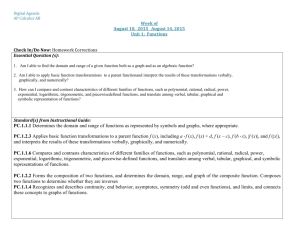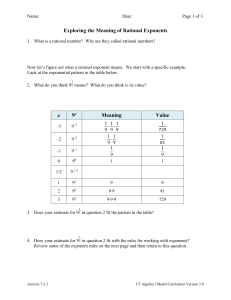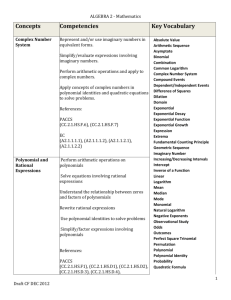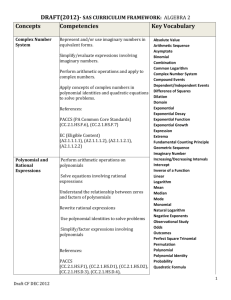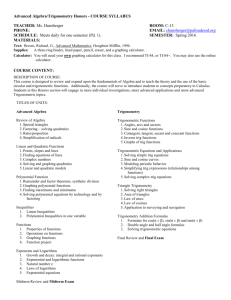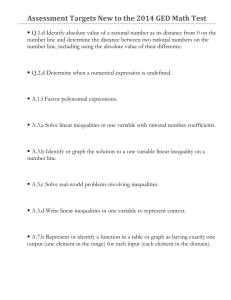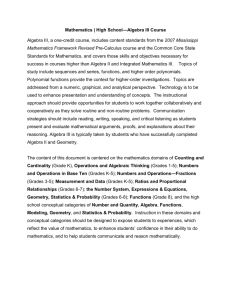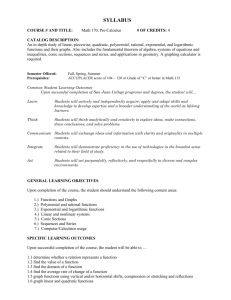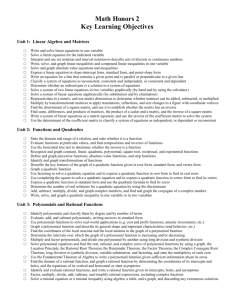algebra 2 curriculum
advertisement
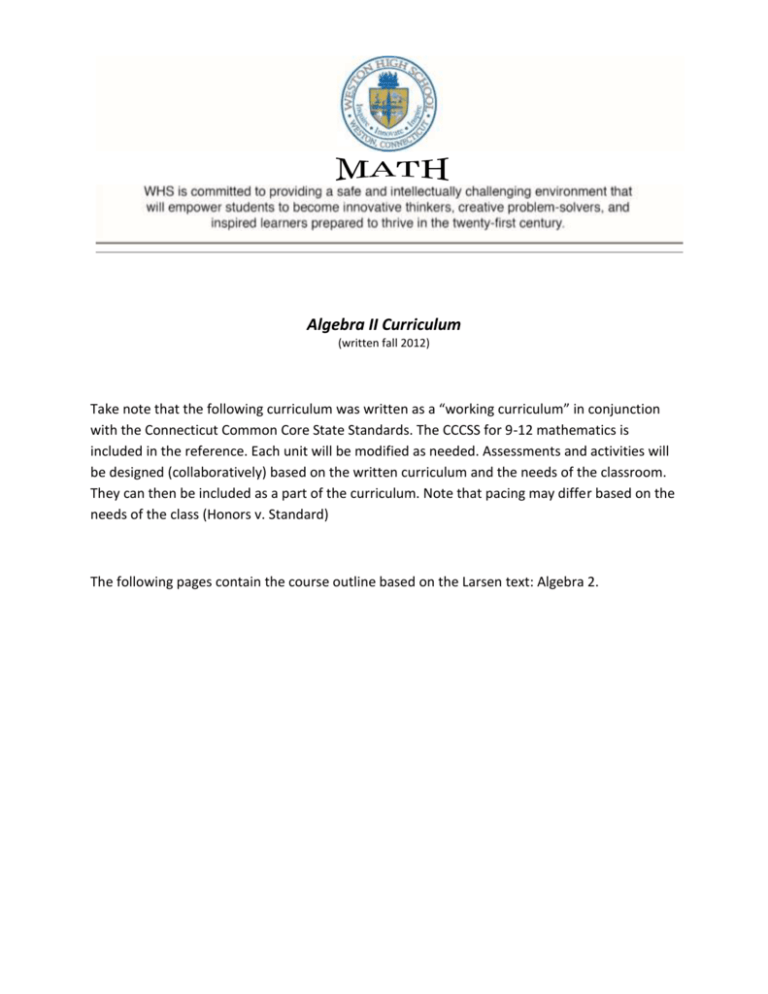
Algebra II Curriculum (written fall 2012) Take note that the following curriculum was written as a “working curriculum” in conjunction with the Connecticut Common Core State Standards. The CCCSS for 9-12 mathematics is included in the reference. Each unit will be modified as needed. Assessments and activities will be designed (collaboratively) based on the written curriculum and the needs of the classroom. They can then be included as a part of the curriculum. Note that pacing may differ based on the needs of the class (Honors v. Standard) The following pages contain the course outline based on the Larsen text: Algebra 2. Algebra 2 – Course Outline Algebra Ready Pretest/Expectations Unit 1a – Linear Functions: Piecewise Functions Generating Linear Equations Reviewing Domain and Range Piecewise Functions and Domain and Range Modeling with Piecewise Functions: Making it Real Unit 1 – Quadratic Functions and Factoring Graphing Quadratic Functions in Standard Form Focus on 𝑥 = − 𝑏 2𝑎 and numerical approach Graphing Quadratic Functions in Vertex or Intercept Form Connections to Transformations Solve ax2 + bx + c = 0 for all a by Graphing and Factoring Solve Quadratic Equations by Finding Square Roots Perform Operations with Complex Numbers Completing the Square and Its Purpose Use the Quadratic Formula and the Discriminant Graph and Solve Quadratic Inequalities Unit 2 – Polynomial and Polynomial Functions Use Properties of Exponents Evaluate and Graph Polynomial Functions Use transformations on simple cubic (y = x3) Add, Subtract, and Multiply Polynomials Apply Remainder and Factor Theorems Find Rational Zeros Apply the Fundamental Theorem of Algebra Analyze Graphs of Polynomial Functions Unit 3 – Rational Exponents and Radical Functions Evaluate nth Roots and Use Rational Exponents Apply Properties of Rational Exponents Perform Function Operations and Composition Use Inverse Functions Graph Square Root and Cube Root Functions Apply transformations to simple square and cube root functions Solve Radical Equations Unit 4 – Exponential and Logarithmic Functions Graph Exponential Growth and Decay Functions Use Functions Involving e Evaluate Logarithms and Logarithmic Functions Apply Properties of Logarithms Solve Exponential and Logarithmic Equations Write and Apply Exponential and Power Functions Apply transformations to simple exponential and power functions. Make connections to exponent rules. Unit 5 – Rational Functions Model Inverse and Joint Variation Graph Simple Rational Functions Graph General Rational Functions Apply transformations to simple rational functions. Make connections to mixed expressions and rational expressions. Multiply and Divide Rational Expressions Add and Subtract Rational Expressions Solve Rational Expressions Describe and Compare Function Characteristics Unit 6 – Trigonometric Ratios and Functions (Chapter 9 in text) Use Trigonometry with Right Triangles Define Central Angles and Use Radian Measure Evaluate Trigonometric Functions of Any Angle Evaluate Inverse Trigonometric Functions Unit 7 – Trigonometric Graphs, Identities, and Equations (Chapter 10 in text) Graph Sine, Cosine, and Tangent Functions Translate and Reflect Trigonometric Functions Verify Trigonometric Identities Focus on Reciprocal, Quotient, Co-function and Negative Angle and Pythagorean Solve Trigonometric Equations Write Trigonometric Functions and Models Apply Sum and Difference Formulas Unit 8 – Data Analysis and Statistics (Chapter 6 in text) Use Combinations and Binomial Theorem Construct and Interpret Binomial Distribution Use Normal Distribution Select and Draw Conclusions from Samples Compare Surveys, Experiments, and Observational Studies
